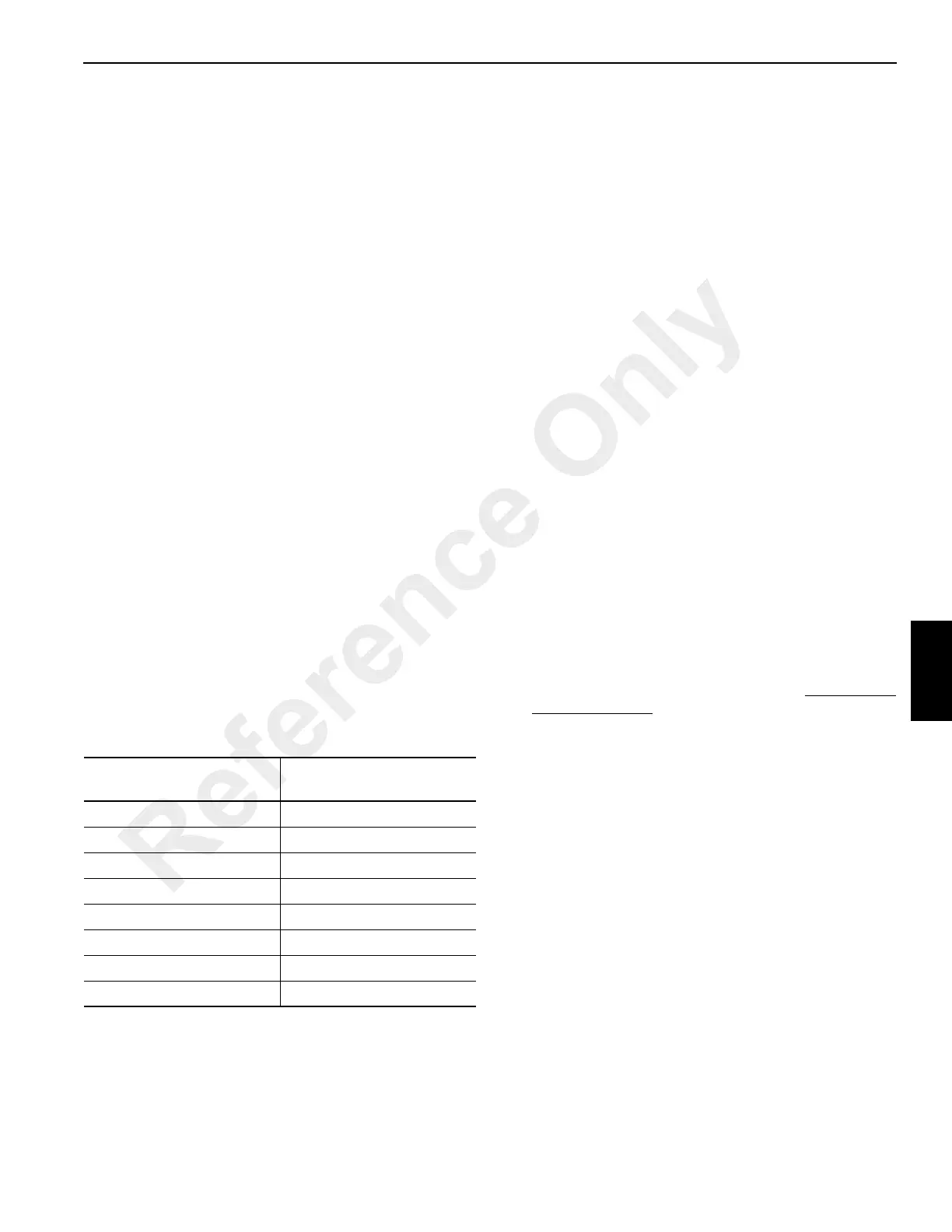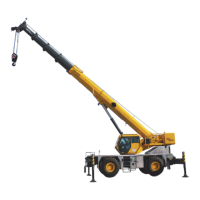GROVE Published 10-21-2010, Control# 198-04 6-9
5540F/YB5515 SERVICE MANUAL ENGINE AND ENGINE SYSTEMS
Engine RPM
To check the engine speed, follow the instructions in the
engine operator’s manual. Maximum and minimum speeds
are controlled by a governor installed on the engine. The
throttle gives variable control of the engine speed within the
limits set by the governor.
Governor
The governor is preset at the factory and is very unlikely that
it should ever have to be adjusted. If adjustment is required
for any reason, refer to Adjustment in this section.
Crankcase System
The engine crankcase system must be well lubricated to
inhibit damage to the engine. The correct type of oil must be
used, as well as proper maintenance at regular intervals. For
correct intervals, see Section 5.
Crankcase Oil Data
Use oil viscosity based upon the expected air temperature
range during the period between oil changes.
The lubricating oil recommendation is based upon engine
design, type of service and the atmospheric temperature
prevailing. High quality oils are required to ensure maximum
performance, long engine life, and minimum cost of
operation.
The recommended oil to be used in the GMC V-6 Gasoline
Engine must have the following classifications.
API, SAE ASTM ClassificationSG/CD, SF/CC
Do not use SD or SC API classification oils. These oils do not
provide adequate protection against oil oxidation, high
temperature oil deposits, rust and corrosion.
Engine Cooling System
The engine cooling system consists of the coolant passages
in the engine, a thermostat, water pump, hoses and radiator
and an overflow bottle.
The engine is cooled by the circulation of coolant through the
passages in the engine block and head. Circulation is by a
thermo-siphon action assisted by a V-belt from the
crankcase pulley.
The water pump bearings are packed with a special grease
during assembly and do not require attention in
maintenance.
Coolant Requirements
The quality of coolant will determine the efficiency and life of
the cooling system.
1. Check the antifreeze concentration several weeks
before the beginning of the cold season. The antifreeze
must have an ethylene glycol (ethanediol) base. Use a
low silicone antifreeze that conforms to one of the
standards below, or which contains no more than 0.1%
anhydrous alkali metasilicate.
U.S.A. - Engineering Standard GM6038-M.
U.K. - BS3151: 1959: Ethandiol antifreeze type B with
sodium nitrate inhibitors.
Australia - AS 2108-1977: Antifreeze compounds and
corrosive inhibitors for engine cooling systems.
2. There is an advantage to using antifreeze even when
frost protection is not necessary. Antifreeze protects
against corrosion and also raises the boiling point of the
coolant. A 50% concentration of antifreeze is preferred,
but if this much protection is not preferred, a 33%
concentration can be used. Never use more than a 65%
concentration under any conditions. Where frost
protection will never be required, use a non-chromate
corrosion inhibitor and clean soft water. Change the
water/corrosion inhibitor every 12 months, or 500 hours,
or to manufacturer’s recommendation.
DO NOT USE HARD WATER in the cooling system.
Hard water, or water with high levels of calcium and
magnesium ions, encourages silica gel formations,
especially after a number of heating and cooling cycles.
These gel formations can result in loss of cooling or
heating in radiators and cab heater cores by coating and
plugging the tubes. The formations usually deposit in the
cooler sections of the cooling system, such as the
radiator bottom tank.
USE SOFT WATER, DISTILLED WATER OR
DEIONIZED WATER to reduce the potential and
severity of silicate dropouts.
NOTE: If you use water without a corrosion inhibitor, rust
will form and plug the small holes in the head
gasket. These holes are orifices and their size is
critical. Do not enlarge the size of the orifices. To do
so will disturb the coolant flow and will not solve
any overheating problem. If you use water without
Recommended SAE
Viscosity Grades.
5W20 +20° to -25° F
10W30 +104° to -15° F
15W40 +122° to +14° F
20W40 +122° to +25° F
10W +40° to -25° F
20W +75° to +32° F
30W +104° to +45° F
40W +122° to +60° F
Reference Only

